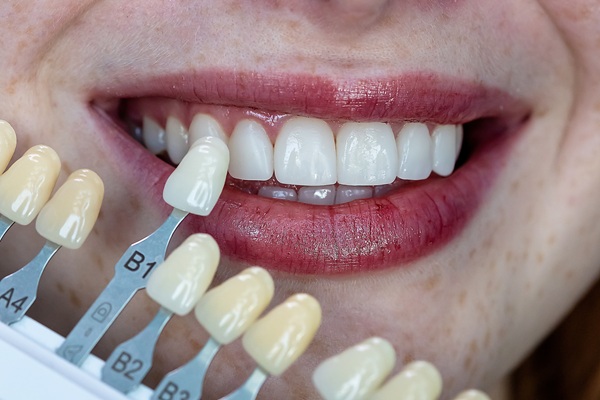Dental Veneers: Is It Time to Repair or Replace Them?

Dental veneers are a popular cosmetic solution for improving the appearance of teeth, offering a natural-looking, durable option for enhancing smiles. However, like any dental restoration, dental veneers can wear out over time or experience damage that may require replacement. Knowing when it is time to replace your dental veneers is crucial for maintaining your smile's aesthetic and functional integrity.
Visible chips, cracks, or wear
One of the most common reasons for replacing dental veneers is visible damage, such as chips, cracks, or excessive wear. Although dental veneers are durable, they are not invincible. Over time, veneers may suffer damage from biting down on hard objects, grinding the teeth, or an accidental impact. Minor chips or cracks may not always require full replacement, but significant damage that affects the appearance of the dental veneer or tooth underneath may require a complete replacement to restore the tooth's appearance and function.
Additionally, excessive wear and tear can make the veneer dull-looking or uneven. If the veneer becomes thinner or loses its polished appearance, it may not no longer provide the same aesthetic benefits.
Changes in fit or comfort
Dental veneers are custom-made to fit each patient's teeth precisely. However, changes in the shape of the underlying teeth or gums can affect the fit of the dental veneers over time. If the restorative begins to feel loose or uncomfortable, a dentist may need to replace it to ensure proper function and comfort. A poorly fitted dental veneer can irritate the surrounding gums or lead to bite issues. If a veneer shifts or feels out of place, it may affect the aesthetics and lead to discomfort while chewing or speaking.
Discoloration or staining
While dental veneers are stain-resistant, they are not entirely immune to discoloration. Over time, the veneer's surface can become stained due to food, drinks, or habits such as smoking. If the veneers are discolored, it may affect the smile's overall appearance. While professional whitening treatments can help with some types of staining, these whitening agents do not work on veneers. Thus, a dentist will need to replace the veneer with a new one to restore the shade and overall appearance.
Additionally, veneers that have become discolored or yellowed may no longer blend seamlessly with the natural teeth, causing an uneven or unnatural smile. If veneers show signs of staining that cannot be reversed with cleaning, replacement is typically the most effective option to restore a natural, uniform appearance.
Changes in the shape or alignment of the teeth
As a person ages, natural changes in the alignment and shape of the teeth can occur. This can affect the fit and appearance of the existing dental veneers. If the teeth shift or the bite changes, it may cause the veneers to appear misaligned or uneven. In some cases, the veneers may no longer blend seamlessly with the surrounding teeth, leading to noticeable gaps or a lack of symmetry. When the teeth shift or become misaligned, the veneers may no longer serve their intended purpose. Replacing the veneers allows for an updated fit that accommodates any changes in the underlying teeth and restores the smile's overall appearance and function.
Schedule an evaluation
Dental veneers are an excellent option for improving the aesthetics of a smile, but like any dental restoration, they will eventually require replacement. If you are experiencing any of the aforementioned signs, contact our office. Our team can schedule an evaluation with our dentist.
Request an appointment here: https://www.ashleysmiledental.com or call Ashley Smile Dental: Winifred Dike, DDS at (281) 990-3009 for an appointment in our Houston office.
Check out what others are saying about our dental services on Yelp: Dental Veneers and Dental Laminates in Houston, TX.
Related Posts
Your teeth are one of the first things that people notice about you, and if you are not confident about your smile, a dental veneer might be on your mind as a possible solution. It is one way to change how a tooth looks, but there are many other options. So, why opt for veneers…
If you are unhappy with the color of your teeth, veneers may be able to help you achieve the smile you’ve always wanted. Veneers, also known as dental porcelain laminates, are thin layers of porcelain that can be placed over your teeth, typically between the outer layer of your tooth and the inner layer of…
Veneers are often recommended for patients who have cracked, chipped, or stained teeth. These shells cover minor dental imperfections and give patients brighter, straighter smiles in minimal time. As an added bonus, there is often no discomfort when being fitted. Patients should understand the differences between composite and porcelain materials to have a knowledgeable discussion…
A chipped tooth can lead to serious complications, which is why it is so important to undergo a repair. There are many ways that a general dentist can treat a tooth with a chip in it, ranging from composite bonding to dental veneer placement. While it can be tempting to let a chipped tooth go,…
